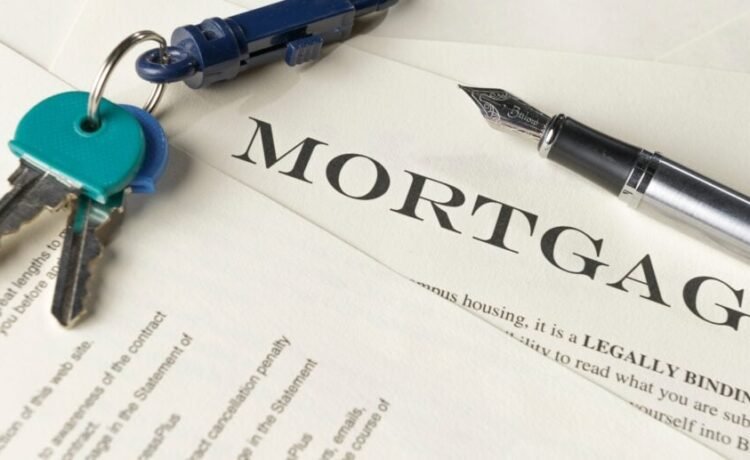For investors who have sat quietly on their portfolios, weathering the storm of high interest rates over the past three years and accruing equity, the reward for their patience may soon be here.
With interest rates down and the Fed green-lighting the second of what could be multiple rate cuts, the opportunity to refinance and release capital to deploy into more investments or upgrades in existing properties to boost cash flow could present a financial sea change.
Freddie Mac, the government’s mortgage underwriter, reports the average 30-year fixed mortgage rate has dropped to its lowest level since October 2024, and now sits around 6.19%. According to the Mortgage Bankers Association (MBA), many homeowners and investors have already begun the process, with refinance activity up 81% year over year for the week ending Oct. 17.
“The lowest mortgage rates in a month spurred an increase in refinance activity, including another pickup in ARM applications. The 30-year fixed rate decreased to 6.37% [now 6.19%], and all other loan types also decreased,” said Joel Kan, MBA’s vice president and deputy chief economist.
“We’ve seen increased demand for refinance as homeowners look to take advantage of lowering rates or opportunities to tap into the home equity they’ve built,” Bhavesh Patel, consumer channel executive at Chase Home Lending, told CBS News on the eve of the first rate cut in September.
Desperation for Landlords to Refinance
Refinancing is a part of many landlords’ investment strategies, if rates are significantly lower (the refi metric has traditionally been a 2% difference between the old and new rates, but some websites have been touting 0.75% more recently). However, such has been the barren period of investing with high interest rates and soaring insurance costs that landlords and homeowners have thrown trusted metrics to the wind and looked for any opportunity to lower their monthly payments.
When the cost of a 30-year home loan fell 0.3% to 6.26% over the three weeks through Sept. 17, marking the lowest rate in 11 months, refinancing activity jumped up over 80%. However, it died down again once rates rose, the Wall Street Journal reported, adding that investors who buy houses to flip or rent out made up around 30% of purchases so far in 2025.
Pulling Equity Out of a Primary Residence to Buy an Investment for Cash
The opportunity to tap into home equity through a cash-out refinance not only appeals to existing investors but also to those who have amassed a nest egg in their personal residence and want to deploy it strategically through an investment. This presents an opportunity to make an all-cash purchase, depending on the amount of equity locked away.
Ruth Bonapace, mortgage loan officer certified in private wealth lending for US Bank, told BiggerPockets:
“I’m doing a mortgage right now for a couple in New York who have no mortgage on their primary residence, but would like to buy a modest place in Vermont to use for vacations and to generate income via Airbnb. Instead of paying a rate in the upper 7s for an investment or second home, they are taking the mortgage on their primary and paying cash for the new place. Having a cash offer will also give them an edge over other buyers when negotiating price or in a bidding war.”
It also allows them to take advantage of a lower interest rate on a primary residence, rather than a higher rate on an investment.
Creating More Liquidity by Refinancing a Primary Residence
Bonapace says that the rate fluctuations of the past two years have made it challenging for her to map out a concrete investment strategy for many of her clients. However, the current downward path has eased the decision-making. She stresses that following the herd into refinancing is not a wise move, as each investor’s situation is unique. Sometimes, simply being creative with refinancing a personal residence can create more liquidity with less hassle than buying an investment property.
“A client of mine has a $2.2 million mortgage at 6.25% on a primary residence they bought two years ago,” Bonapace says. “They refinanced into a seven-year ARM at 5.5%. By taking advantage of the kind of wealth management relationship pricing that many major banks offer by opening an account with $500,000, they got another 0.375% reduction, bringing the rate to 5.125%. “
“At 6.25%, their payment is $13,545,” Bonapace adds. “At 5.5%, it is $12,491. At 5.125, it is $11,987. The difference between 6.25% and 5.125% is $1,467 a month or $18,804 a year.”
To generate $1,500 in cash flow with a mortgage rate of 5.5%, an investor would need to buy a property for $440,000, putting down 20% ($48,000) to secure a $352,000 loan. Despite the tax advantages and equity appreciation of owning an investment, an investor would need to weigh insurance costs, repairs, and the hassle of dealing with tenants to decide whether leveraging their money was worth it. Many might decide that simply refinancing a personal residence and saving the cash to deploy at a later date could be a better, less stressful move.
Why Size Matters When Refinancing
Refinancing is not free. Bonapace stresses that the decision to refinance or not often comes down to how long you plan to keep an investment, and whether you can pay back the refinance costs with the added cash flow, factoring in rent increases. Equally, small rate drops of 0.25% won’t move the needle much on a small mortgage when factoring in closing costs; however, on a larger mortgage, it can make a significant difference to the monthly payments.
A study by Neighbors Bank showed that most borrowers with a 30-year mortgage needed about a 0.67-point rate drop to see meaningful savings and break even within three years. Homeowners with 15-year mortgages, however, could benefit from smaller decreases; even a 0.50% drop could add more than $1,500 in savings over three years, depending on the loan amount.
Final Thoughts
Choosing whether to refinance for a primary homeowner comes with clear-cut advantages: dropping an interest rate significantly, getting rid of PMI, pulling cash out for essential repairs, and, of course, having money to invest.
For existing real estate investors, it all comes down to one metric: cash flow. If refinancing reduces cash flow, it’s rarely worth it, despite the temptation to use the extra money for cosmetic upgrades. Unless they result in substantial cash flow, it’s best to save the funds from a rate-and-term refi rather than a cash-out refi, and to do the repairs with cash.
However, when cash-out refinancing, whether on an investment or personal residence, can result in substantially more money and decrease a tax burden in the process of buying a new investment, it’s worth looking into. Just remember to factor in all possible expenses, and be careful about ARMs unless you have a specific investment plan.








Recent Comments